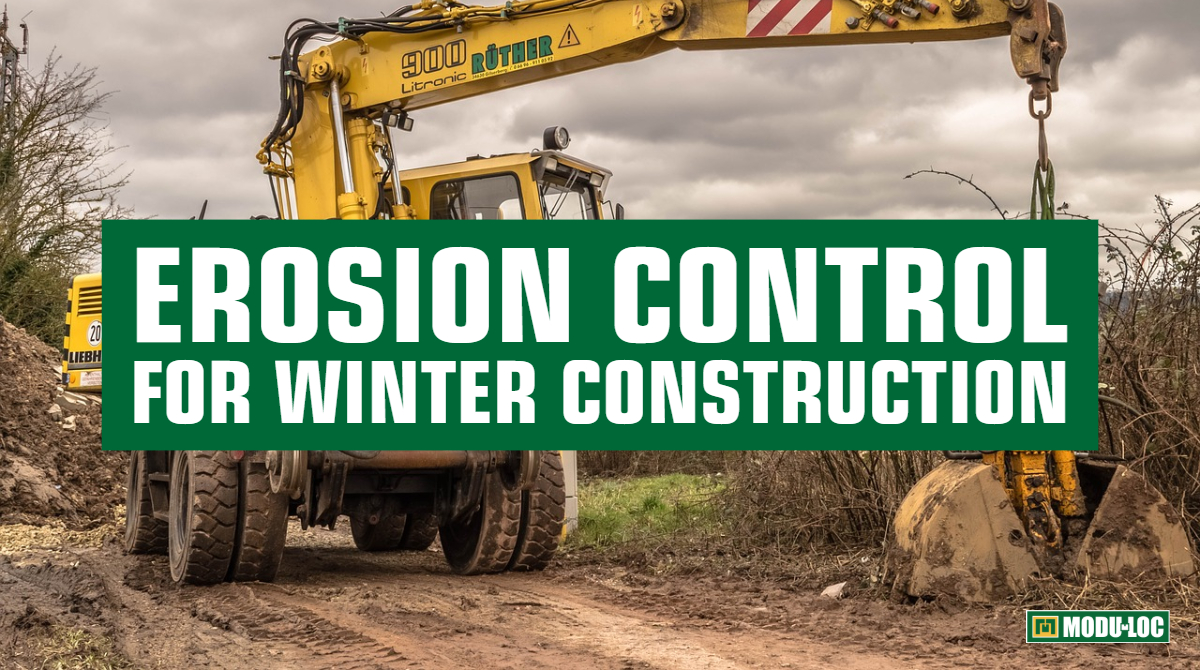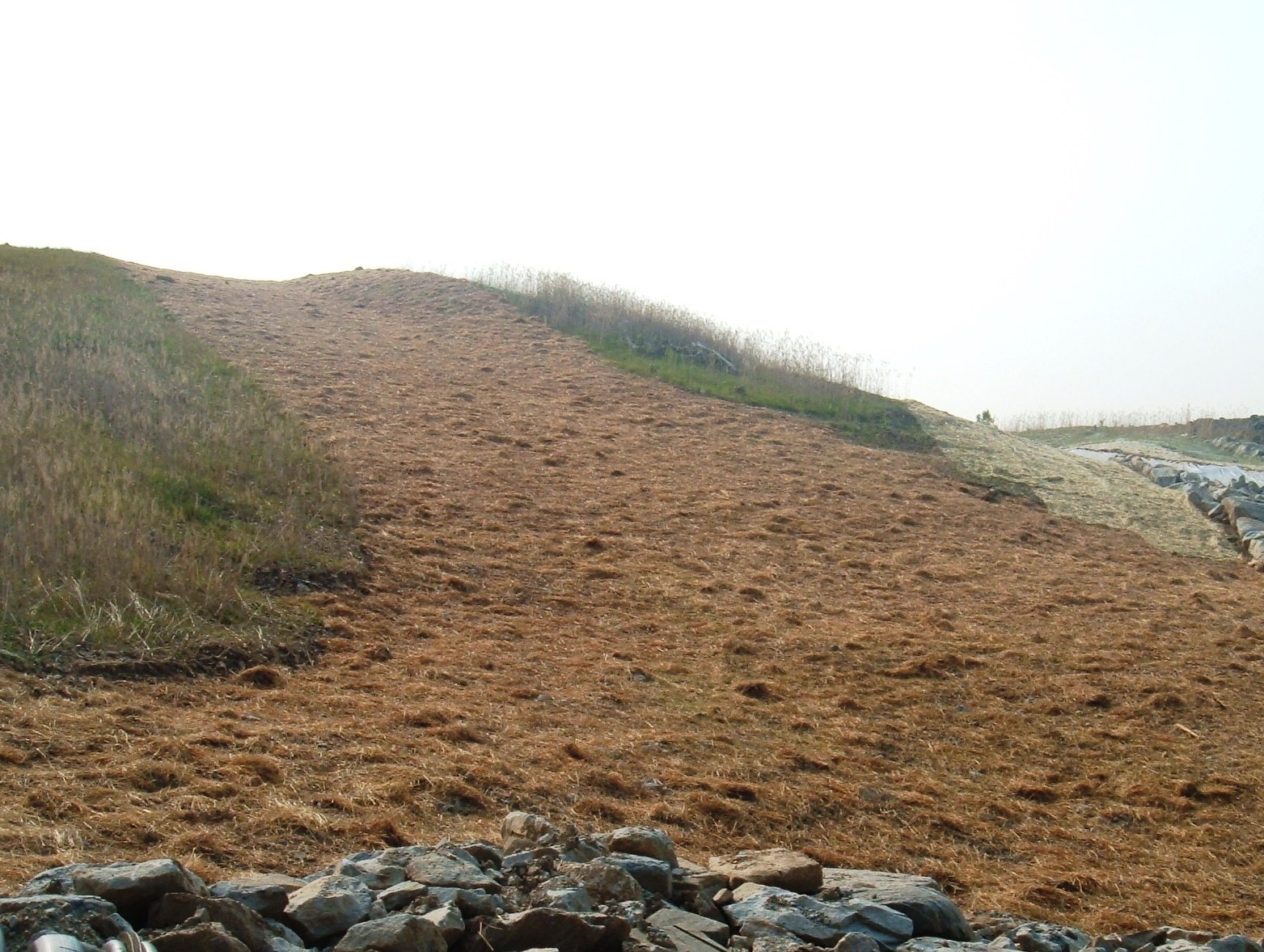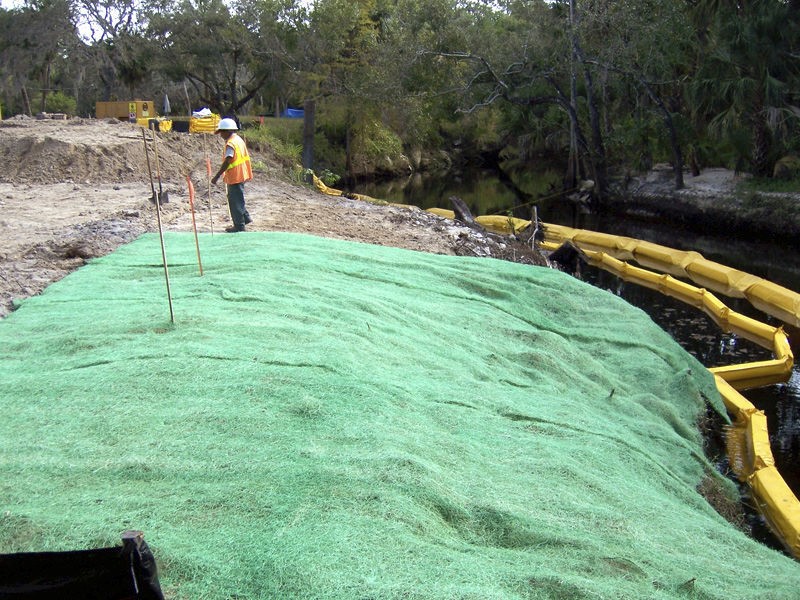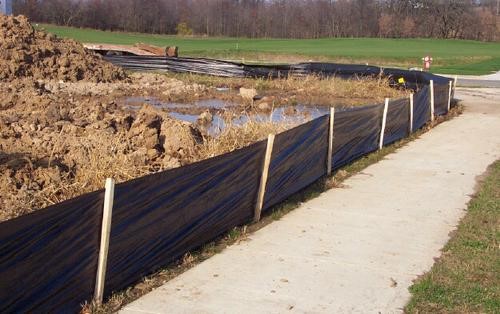Erosion Control Methods for Winter Construction
November 23, 2018
We experience a lot of different weather conditions during the long winter months here in Canada. Ice, rain and snow can all have an impact on the condition of your construction site. Harsh winter weather can pose numerous issues on the job site, potentially delaying work and running up costs. Generally, winter construction jobs require more consideration and planning than summer jobs do.
Although Mother Nature is unpredictable, there are steps you can take to avoid potential issues and ensure a successful job. One specific issue we see during the winter months is erosion. If your job will still be active throughout the winter, you should have a plan in place to control the costly implications of soil erosion on your site.
Erosion control is important to prevent surface runoff and protect any nearby bodies of water from pollution. It also limits soil loss and maintains the integrity of neighbouring properties and wildlife habitats. Most municipalities have regulations in place regarding erosion control for construction jobs. Make sure to consult your municipal bylaws while creating your erosion control plan.
Before construction begins, a bioengineer must come in to conduct an analysis of the area that is being worked on. They will consider nearby bodies of water, bluffs and areas prone to high levels of erosion. To prevent erosion, construction activity should be performed in a way that avoids disturbing the soil beneath it. This requires an assessment of the work being done and the potential impacts on the soil.
After determining any potential issues, plans will need to be made for erosion control methods. There are many erosion control methods, and you’ll need to consider various factors such as the length of the job, your budget, and the terrain to determine which approach is right for your site. Erosion control also demands continuous maintenance and monitoring, so be prepared to make an ongoing investment of time and dollars.
Here are some of the most common methods of erosion control:
Mulch
Mulch acts as a soil insulator. It helps retain moisture and promote growth. In the winter, it is primarily used as a stabilizer for erosion control. Depending on the slope of the area, if you are using mulch to control erosion then you may need to replace it regularly throughout the duration of the project. All things considered, mulch is still an efficient, cost-effective and short-term solution for erosion.

Erosion Control Blanket
These blankets or mats are anchored to the soil as a long-term erosion control method. Erosion control blankets can even help with vegetation growth. They require less maintenance compared to mulch, however with this convenience comes a higher price. Erosion control blankets are ideal for steep slopes and long-term jobs.

Hydro-Mulch
This solution is a spray-on mulch method that is easy to apply. Combining hydro-mulch with seed (seeding) results in a great long-term solution. If you use hydro-mulch without seed, it can still work well for short-term stoppage. Although hydro-mulch will last longer than ordinary mulch, it will still fade over time and will require some additional maintenance.

Silt Fence
Silt fence is a temporary erosion control method that can be easily installed and removed as needed. It is usually used in areas where construction is being done near a body of water in order to maintain water quality. Since this is a temporary method, it will need to be continuously maintained and monitored for potential damage.

Like with any planned construction efforts, continuous inspection and maintenance are vital to prevent erosion. It is most important to monitor this issue during heavy rain or snow. That’s why in the long, cold Canadian winter months it is especially important to focus on erosion control efforts. The best option for you relies on a variety of factors. It is always best to work with a specialist during your project. These experts can better identify potential problems and suggest the best solutions for your specific job site.
Resources:
http://www.transportation.alberta.ca/Content/docType372/Production/7ErosSediCntrlMthds.pdf
We’re here to answer any questions you may have.



 Canada - EN
Canada - EN Canada - FR
Canada - FR United States
United States




